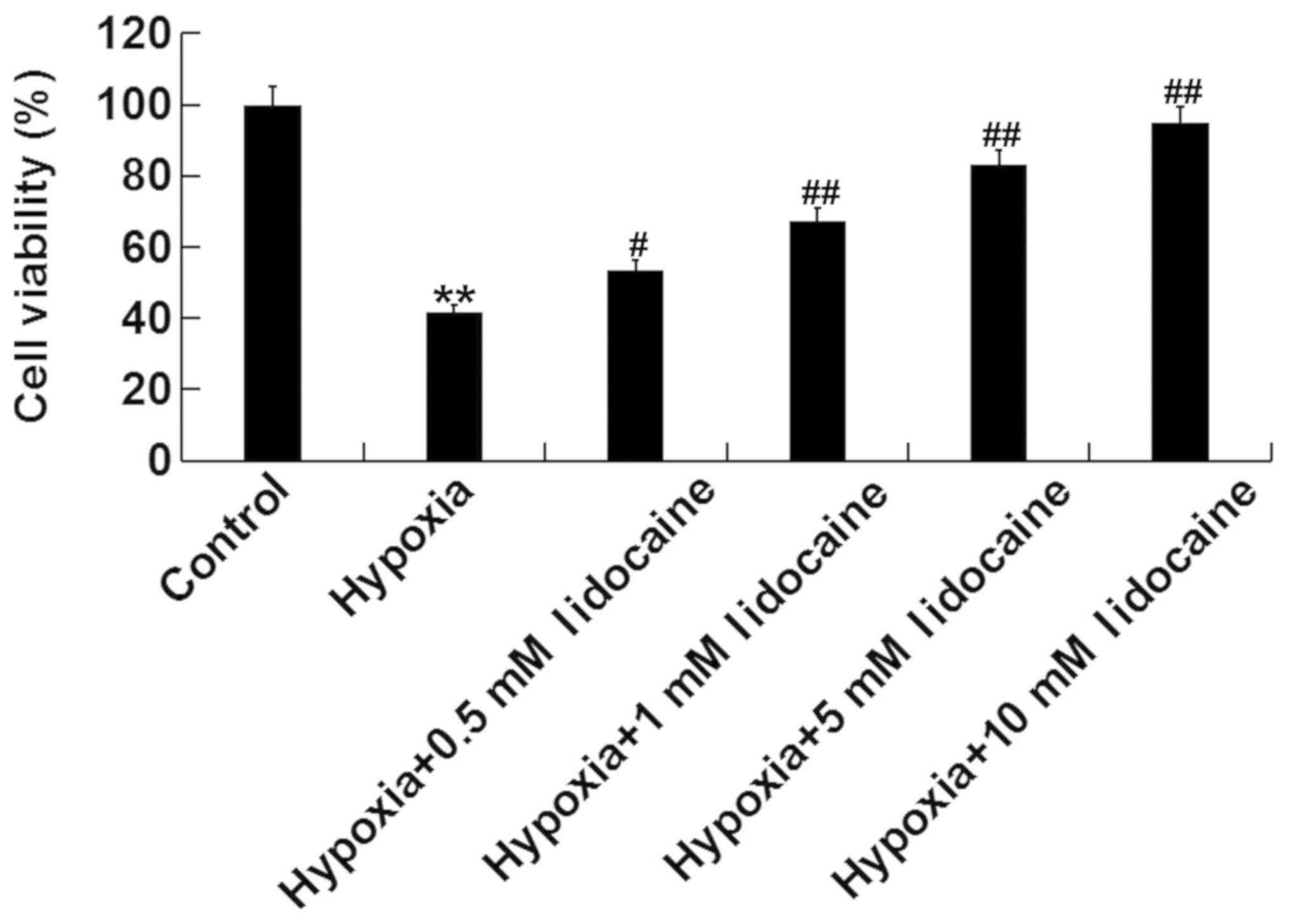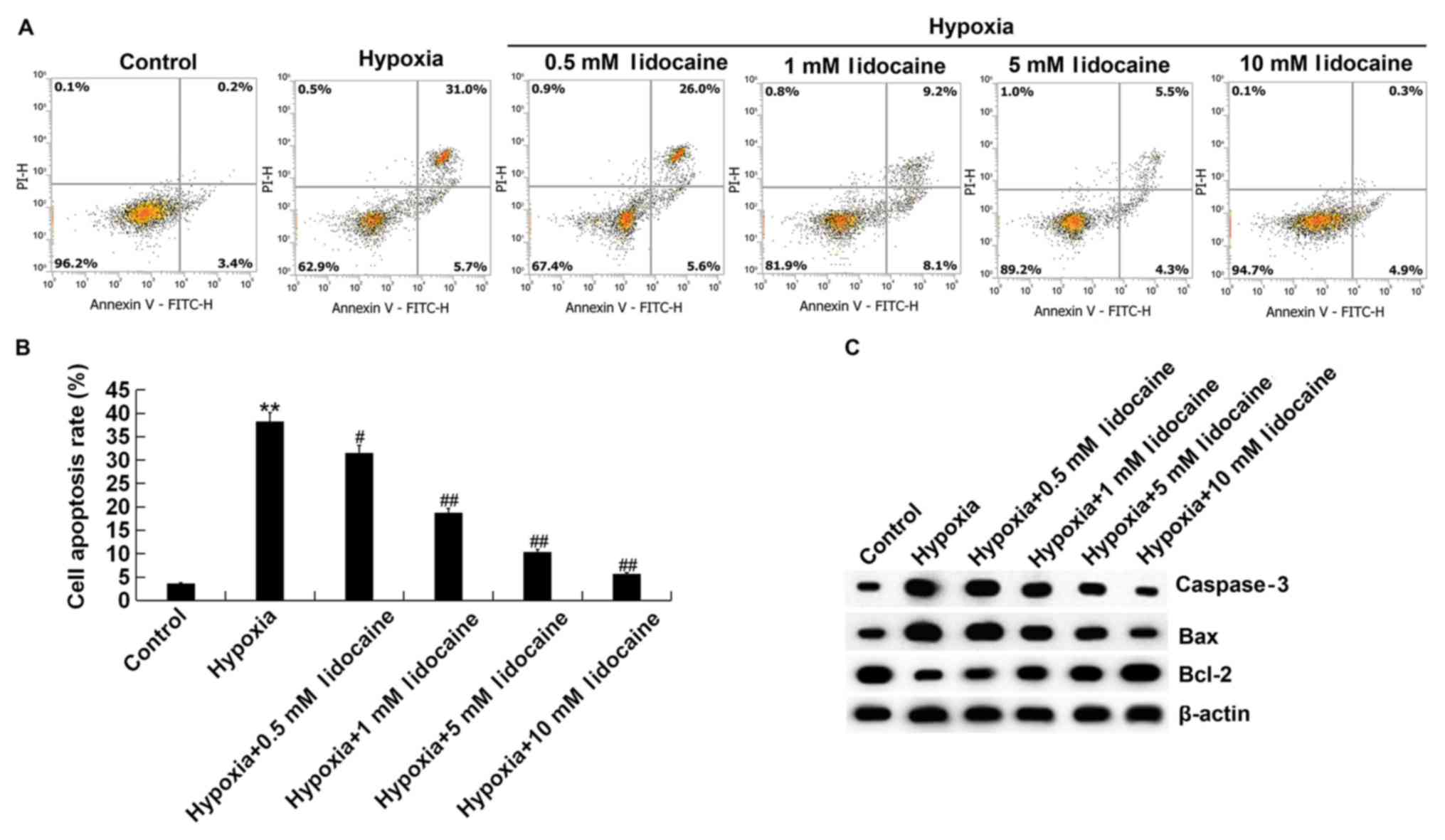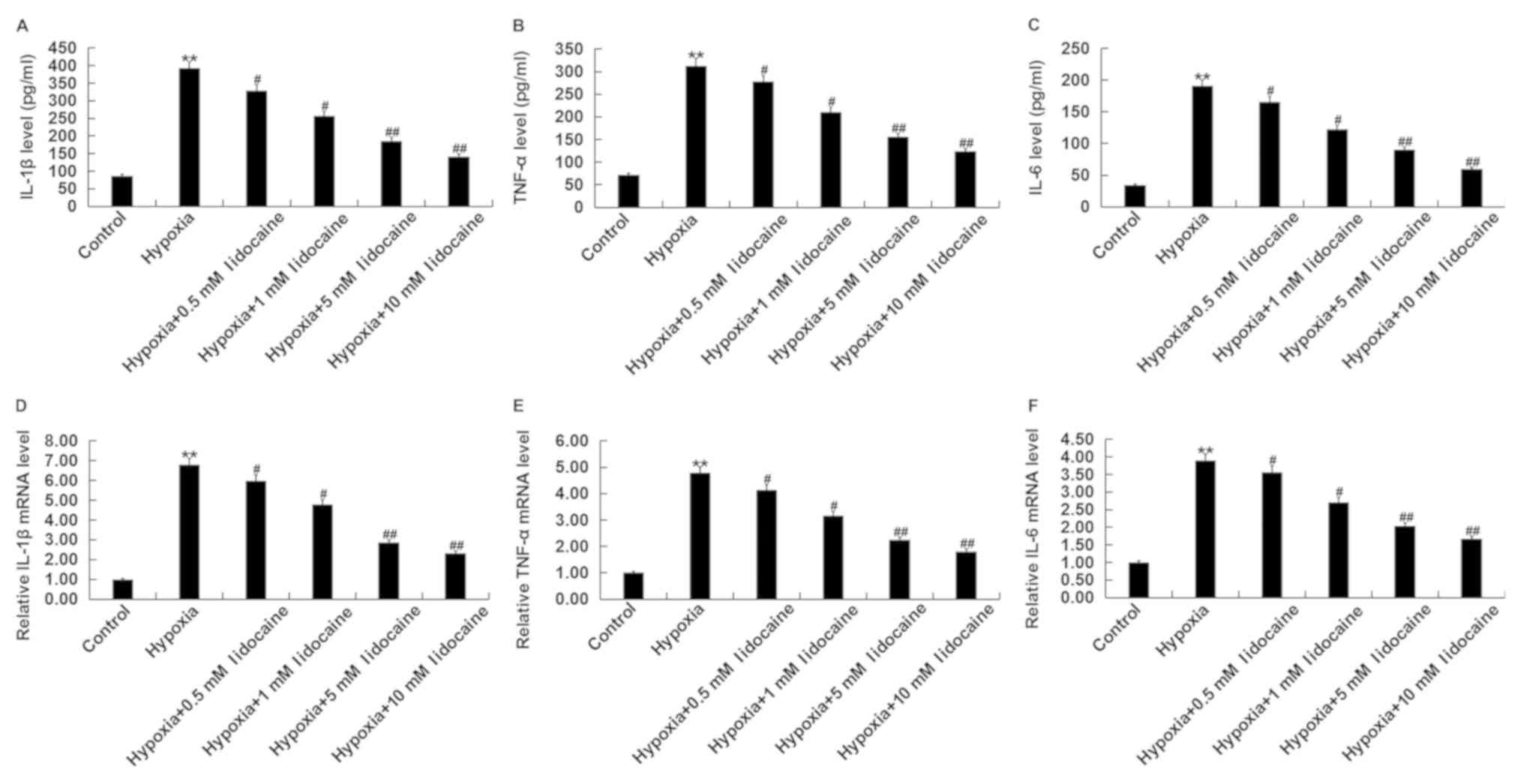|
1
|
Moran AE, Forouzanfar MH, Roth GA, Mensah
GA, Ezzati M, Flaxman A, Murray CJ and Naghavi M: The global burden
of ischemic heart disease in 1990 and 2010: The Global Burden of
disease 2010 study. Circulation. 129:1493–1501. 2014. View Article : Google Scholar : PubMed/NCBI
|
|
2
|
Boateng S and Sanborn T: Acute myocardial
infarction. Dis Mon. 59:83–96. 2013. View Article : Google Scholar : PubMed/NCBI
|
|
3
|
Lu L, Liu M, Sun R, Zheng Y and Zhang P:
Myocardial Infarction: Symptoms and treatments. Cell Biochem
Biophys. 72:865–867. 2015. View Article : Google Scholar : PubMed/NCBI
|
|
4
|
Johansson S, Rosengren A, Young K and
Jennings E: Mortality and morbidity trends after the first year in
survivors of acute myocardial infarction: A systematic review. BMC
Cardiovasc Disord. 17:532017. View Article : Google Scholar : PubMed/NCBI
|
|
5
|
Chen-Scarabelli C, Saravolatz L Jr, Murad
Y, Shieh WS, Qureshi W, Di Rezze J, Abrencillo R, Gardin T, Gidwani
UK, Saravolatz L, et al: A critical review of the use of carvedilol
in ischemic heart disease. Am J Cardiovasc Drugs. 12:391–401. 2012.
View Article : Google Scholar : PubMed/NCBI
|
|
6
|
Gong L, Chang H, Zhang J, Guo G, Shi J and
Xu H: Astragaloside IV protects rat cardiomyocytes from
hypoxia-induced injury by down-regulation of miR-23a and miR-92a.
Cell Physiol Biochem. 49:2240–2253. 2018. View Article : Google Scholar : PubMed/NCBI
|
|
7
|
Yan L, Yang H, Li Y, Duan H, Wu J, Qian P,
Li B and Wang S: Regulator of calcineurin 1-1L protects
cardiomyocytes against hypoxia-induced apoptosis via mitophagy. J
Cardiovasc Pharmacol. 64:310–317. 2014. View Article : Google Scholar : PubMed/NCBI
|
|
8
|
Task Force on the management of ST-segment
elevation acute myocardial infarction of the European Society of
Cardiology (ESC), ; Steg PG, James SK, Atar D, Badano LP,
Blömstrom-Lundqvist C, Borger MA, Di Mario C, Dickstein K, Ducrocq
G, et al: ESC Guidelines for the management of acute myocardial
infarction in patients presenting with ST-segment elevation. Eur
Heart J. 33:2569–2619. 2012. View Article : Google Scholar : PubMed/NCBI
|
|
9
|
Yuan M, Zhang L, You F, Zhou J, Ma Y, Yang
F and Tao L: MiR-145-5p regulates hypoxia-induced inflammatory
response and apoptosis in cardiomyocytes by targeting CD40. Mol
Cell Biochem. 431:123–131. 2017. View Article : Google Scholar : PubMed/NCBI
|
|
10
|
Marchant DJ, Boyd JH, Lin DC, Granville
DJ, Garmaroudi FS and McManus BM: Infammation in myocardial
diseases. Circ Res. 112:126–144. 2012. View Article : Google Scholar
|
|
11
|
Sun M, Dawood F, Wen WH, Chen M, Dixon I,
Kirshenbaum LA and Liu PP: Excessive tumor necrosis factor
activation after infarction contributes to susceptibility of
myocardial rupture and left ventricular dysfunction. Circulation.
110:3221–3228. 2004. View Article : Google Scholar : PubMed/NCBI
|
|
12
|
Tare M, Bensley JG, Moss TJ, Lingwood BE,
Kim MY, Barton SK, Kluckow M, Gill AW, De Matteo R, Harding R, et
al: Exposure to intrauterine inflammation leads to impaired
function and altered structure in the preterm heart of fetal sheep.
Clin Sci (Lond). 127:559–569. 2014. View Article : Google Scholar : PubMed/NCBI
|
|
13
|
Mandel I, Podoxenov Y, Suhodolo I,
Podoxenov A, Svirko Y, Kamenschikov N, Mikheev S, Sementsov A,
Dzuman A and Maslov L: Hypoxic and hyperoxic preconditioning in
myocardial protection against ischemia-reperfusion injury:
Experimental study. J Cardiothor Vasc Anes. 30 (Suppl 1):S6–S7.
2016. View Article : Google Scholar
|
|
14
|
Carson IW, Lyons SM and Shanks RG:
Anti-arrhythmic drugs. Br J Anaest. 51:659–670. 1979. View Article : Google Scholar
|
|
15
|
Khan SU, Winnicka L, Saleem MA, Rahman H
and Rehman N: Amiodarone, lidocaine, magnesium or placebo in shock
refractory ventricular arrhythmia: A Bayesian network
meta-analysis. Heart Lung. 46:417–424. 2017. View Article : Google Scholar : PubMed/NCBI
|
|
16
|
Caracas HC, Maciel JV, Martins PM, de
Souza MM and Maia LC: The use of lidocaine as an anti-inflammatory
substance: A systematic review. J Dent. 37:93–97. 2009. View Article : Google Scholar : PubMed/NCBI
|
|
17
|
Fukuda S, Nojima J, Motoki Y, Yamaguti K,
Nakatomi Y, Okawa N, Fujiwara K, Watanabe Y and Kuratsune H: A
potential biomarker for fatigue: Oxidative stress and
anti-oxidative activity. Biol Psych. 118:88–93. 2016. View Article : Google Scholar
|
|
18
|
Li H, Li C, Zhang H, Zhang L, Cheng R, Li
M, Guo Y, Zhang Z, Lu Z, Zhuang Y, et al: Effects of lidocaine on
regulatory Tcells in atopic dermatitis. J Allergy Clin Immun.
137:613–617.e5. 2016. View Article : Google Scholar : PubMed/NCBI
|
|
19
|
Bundscherer AC, Malsy M, Bitzinger DI,
Wiese CH, Gruber MA and Graf BM: Effects of Lidocaine on HT-29 and
SW480 colon cancer cells in vitro. Anticancer Res. 37:1941–1945.
2017. View Article : Google Scholar : PubMed/NCBI
|
|
20
|
Ye L, Zhang Y, Chen YJ and Liu Q:
Anti-tumor effects of lidocaine on human gastric cancer cells in
vitro. Bratisl Lek Listy. 120:212–217. 2019.PubMed/NCBI
|
|
21
|
Župčić M, Graf Župčić S, Duzel V, Šimurina
T, Šakić L, Fudurić J, Peršec J, Milošević M, Stanec Z, Korušić A
and Barišin S: A combination of levobupivacaine and lidocaine for
paravertebral block in breast cancer patients undergoing
quadrantectomy causes greater hemodynamic oscillations than
levobupivacaine alone. Croat Med J. 58:270–280. 2017. View Article : Google Scholar : PubMed/NCBI
|
|
22
|
Maurice JM, Gan Y, Hibner M and Huang Y:
Bupivacaine causes cytotoxicity via extracellular signal-regulated
kinase (ERK) and Akt pathways in mouse myoblast C2C12 Cells. J
Minim Invas Gyn. 16 (Suppl):S11–S12. 2009. View Article : Google Scholar
|
|
23
|
Müller-Edenborn B, Kania G, Osto E, Jakob
P, Krasniqi N, Beck-Schimmer B, Blyszczuk P and Eriksson U:
Lidocaine enhances contractile function of ischemic myocardial
regions in mouse model of sustained myocardial ischemia. PLoS One.
11:e01546992016. View Article : Google Scholar : PubMed/NCBI
|
|
24
|
Kaczmarek DJ, Herzog C, Larmann J,
Gillmann HJ, Hildebrand R, Schmitz M, Westermann A, Harendza T,
Werdehausen R, Osthaus AW, et al: Lidocaine protects from
myocardial damage due to ischemia and reperfusion in mice by its
antiapoptotic effects. Anesthesiology. 110:1041–1049. 2009.
View Article : Google Scholar : PubMed/NCBI
|
|
25
|
Okamoto A, Sumi C, Tanaka H, Kusunoki M,
Iwai T, Nishi K, Matsuo Y, Harada H, Takenaga K, Bono H and Hirota
K: HIF-1-mediated suppression of mitochondria electron transport
chain function confers resistance to lidocaine-induced cell death.
Sci Rep. 7:38162017. View Article : Google Scholar : PubMed/NCBI
|
|
26
|
Chang YC, Hsu YC, Liu CL, Huang SY, Hu MC
and Cheng SP: Local anesthetics induce apoptosis in human thyroid
cancer cells through the mitogen-activated protein kinase pathway.
PLoS One. 9:e895632014. View Article : Google Scholar : PubMed/NCBI
|
|
27
|
Fantetti KN, Gray EL, Ganesan P, Kulkarni
A and O'Donnell LA: Interferon gamma protects neonatal neural
stem/progenitor cells during measles virus infection of the brain.
J Neuroinflamm. 13:1072016. View Article : Google Scholar
|
|
28
|
Livak KJ and Schmittgen TD: Analysis of
relative gene expression data using real-time quantitative PCR and
the 2(-Delta Delta C(T)) method. Methods. 25:402–408. 2001.
View Article : Google Scholar : PubMed/NCBI
|
|
29
|
Choi CW, Hwang JH, Chang YS, Shin SM, Park
WS and Lee M: Effects of alpha-phenyl-N-tert-butyl nitrone (PBN)on
brain cell membrane function and energy metabolism during transient
global cerebral hypoxia-ischemia and reoxygenation-reperfusion in
newborn piglets. J Korean Med Sci. 19:413–418. 2004. View Article : Google Scholar : PubMed/NCBI
|
|
30
|
Vorobieva VV and Shabanov PD: Vibration
model for hypoxic type of cell metabolism evaluated on rabbit
cardiomyocytes. Bull Exp Biol Med. 147:768–771. 2009. View Article : Google Scholar : PubMed/NCBI
|
|
31
|
Han F, Chen Q, Su J, Zheng A, Chen K, Sun
S, Wu H, Jiang L, Xu X, Yang M, et al: MicroRNA-124 regulates
cardiomyocyte apoptosis and myocardial infarction through targeting
Dhcr24. J Mol Cell Cardiol. 132:178–188. 2019. View Article : Google Scholar : PubMed/NCBI
|
|
32
|
Zhang J, Qiu W, Ma J, Wang Y, Hu Z, Long
K, Wang X, Jin L, Tang Q, Tang G, et al: miR-27a-5p attenuates
hypoxia-induced rat cardiomyocyte injury by inhibiting Atg7. Int J
Mol Sci. 20(pii): E24182019. View Article : Google Scholar : PubMed/NCBI
|
|
33
|
Deng F, Wang S, Zhang L, Xie X, Cai S, Li
H, Xie GL, Miao HL, Yang C, Liu X and Xia Z: Propofol through
upregulating caveolin-3 attenuates post-hypoxic mitochondrial
damage and cell death in H9C2 cardiomyocytes during hyperglycemia.
Cell Physiol Biochem. 44:279–292. 2017. View Article : Google Scholar : PubMed/NCBI
|
|
34
|
Martí-Carvajal AJ, Simancas-Racines D,
Anand V and Bangdiwala S: Prophylactic lidocaine for myocardial
infarction. Cochrane Database Syst Rev. CD0085532015.PubMed/NCBI
|
|
35
|
Daido S, Tamiya T, Ono Y, Terada K,
Mizumatsu S and Ohmoto T: Expression of Bcl-2, Bcl-x and Bax
proteins in astrocytomas in relation to patient survival. Biochem
Biophys Res Commun. 18:123–129. 2001.
|
|
36
|
Tamatani M, Ogawa S, Nuñez G and Tohyama
M: Growth factors prevent changes in Bcl-2 and Bax expression and
neuronal apoptosis induced by nitric oxide. Cell Death Differ.
5:911–919. 1998. View Article : Google Scholar : PubMed/NCBI
|
|
37
|
Zhang J, Xia Y, Xu Z and Deng X: Propofol
suppressed Hypoxia/Reoxygenation-induced apoptosis in HBVSMC by
regulation of the expression of Bcl-2, Bax, Caspase3, Kir6.1, and
p-JNK. Oxid Med Cell Longev. 2016:15187382016. View Article : Google Scholar : PubMed/NCBI
|
|
38
|
Li H, Lv B, Kong L, Xia J, Zhu M, Hu L,
Zhen D, Wu Y, Jia X, Zhu S and Cui H: Nova1 mediates resistance of
rat pheochromocytoma cells to hypoxia-induced apoptosis via the
Bax/Bcl-2/caspase-3 pathway. Int J Mol Med. 40:1125–1133. 2017.
View Article : Google Scholar : PubMed/NCBI
|
|
39
|
Frangogiannis NG: The inflammatory
response in myocardial injury, repair, and remodelling. Nat Rev
Cardiol. 11:255–265. 2014. View Article : Google Scholar : PubMed/NCBI
|
|
40
|
Ferdinandy P, Schulz R and Baxter GF:
Interaction of cardiovascular risk factors with myocardial
ischemia/reperfusion injury, preconditioning, and postconditioning.
J Pharmacol Rev. 59:418–458. 2007. View Article : Google Scholar
|
|
41
|
Milano G, Morel S, Bonny C, Samaja M, von
Segesser LK, Nicod P and Vassalli G: A Peptide inhibitor of c-Jun
NH2-terminal kinase reduces myocardial ischemia-reperfusion injury
and infarct size in vivo. Am J Physiol Heart Circ Physiol.
292:H1828–H1835. 2007. View Article : Google Scholar : PubMed/NCBI
|
|
42
|
Wei H, Li H, Wan SP, Zeng QT, Cheng LX,
Jiang LL and Peng YD: Cardioprotective effects of Malvidin against
isoproterenol-induced myocardial infarction in rats: A mechanistic
study. Med Sci Monit. 23:2007–2016. 2017. View Article : Google Scholar : PubMed/NCBI
|
|
43
|
Chen Y, Ba L, Huang W, Liu Y, Pan H,
Mingyao E, Shi P, Wang Y, Li S, Qi H, et al: Role of carvacrol in
cardioprotection against myocardial ischemia/reperfusion injury in
rats through activation of MAPK/ERK and Akt/eNOS signaling
pathways. Eur J Pharmacol. 796:90–100. 2017. View Article : Google Scholar : PubMed/NCBI
|



















